Best spring bulbs – 10 bulbs to grow, and when and how to plant them
Discover the best spring bulbs to grow to bring life and color back to the garden after winter, with tips on when and how to plant them

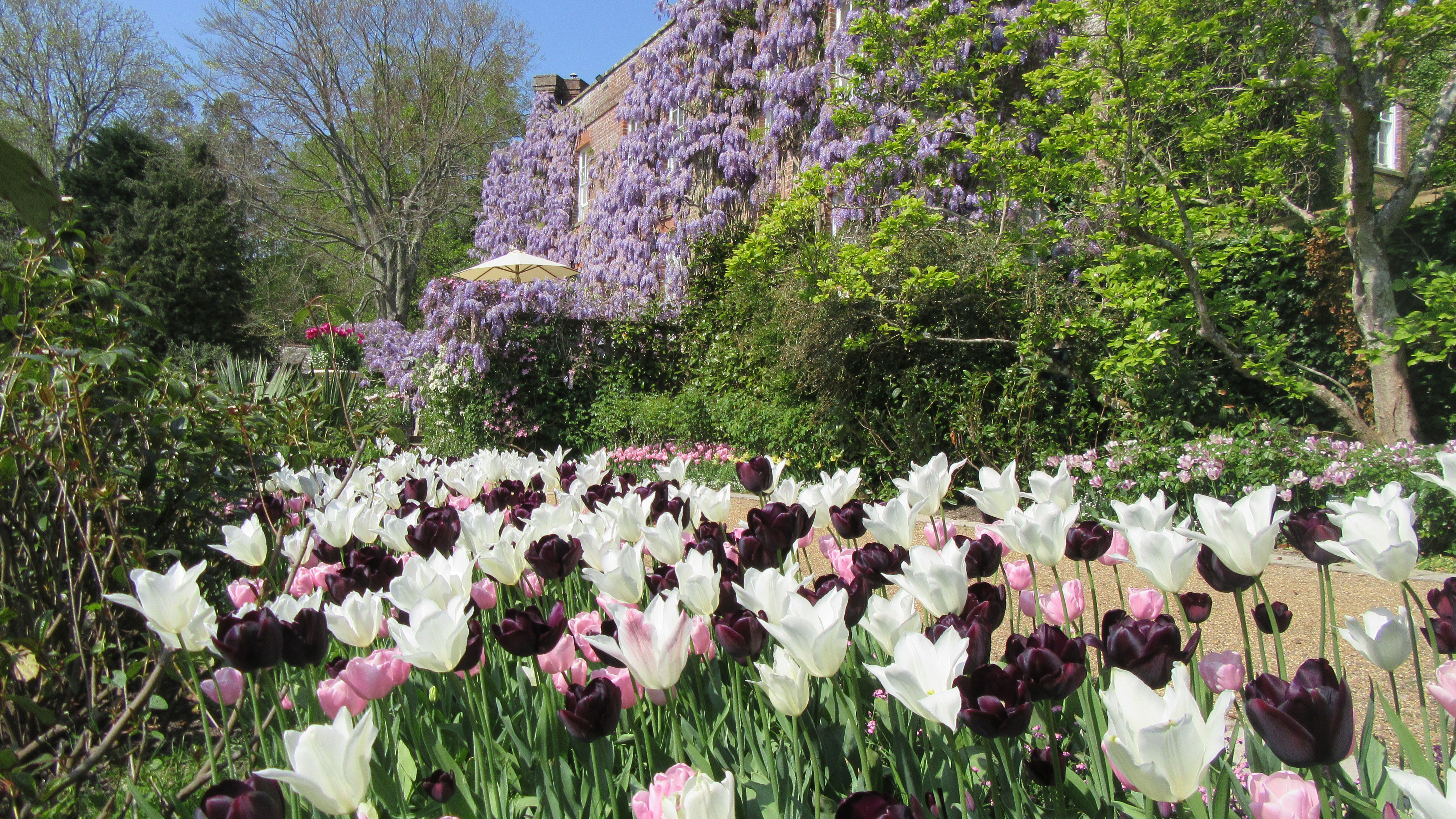
Spring bulbs are a joyous sight, bringing life and color back to the garden after the long, cold months of winter.
There is a wonderful choice of flowering spring bulbs that will carry the floral display in your backyard all the way through the season into the colourful riot of summer, so they are one of the best backyard ideas.
There are lots of ways you can add spring bulbs to your garden, whether they are used to plug the gaps in herbaceous borders as flower bed ideas, or planted in pots to enliven patios and courtyards.
'Many spring bulbs will naturalize in turf, while ‘tulips, daffodils and most other bulbs do well in containers planted to 1 ½ times their depth,’ advises Guy Barter, chief horticulturist at RHS Garden Wisley.
'If you're feeling ambitious, you can can try planting layers of different bulbs, with perhaps Anemone blanda for early flowers, grape hyacinths for mid-season and late tulips for May,' adds Guy.
Best spring bulbs
If you can't bear to wait until spring for a burst of color, you could even learn how to force bulbs for a winter treat of the likes of hyacinths, grape hyacinths, narcissus or crocus.
1. Crocus
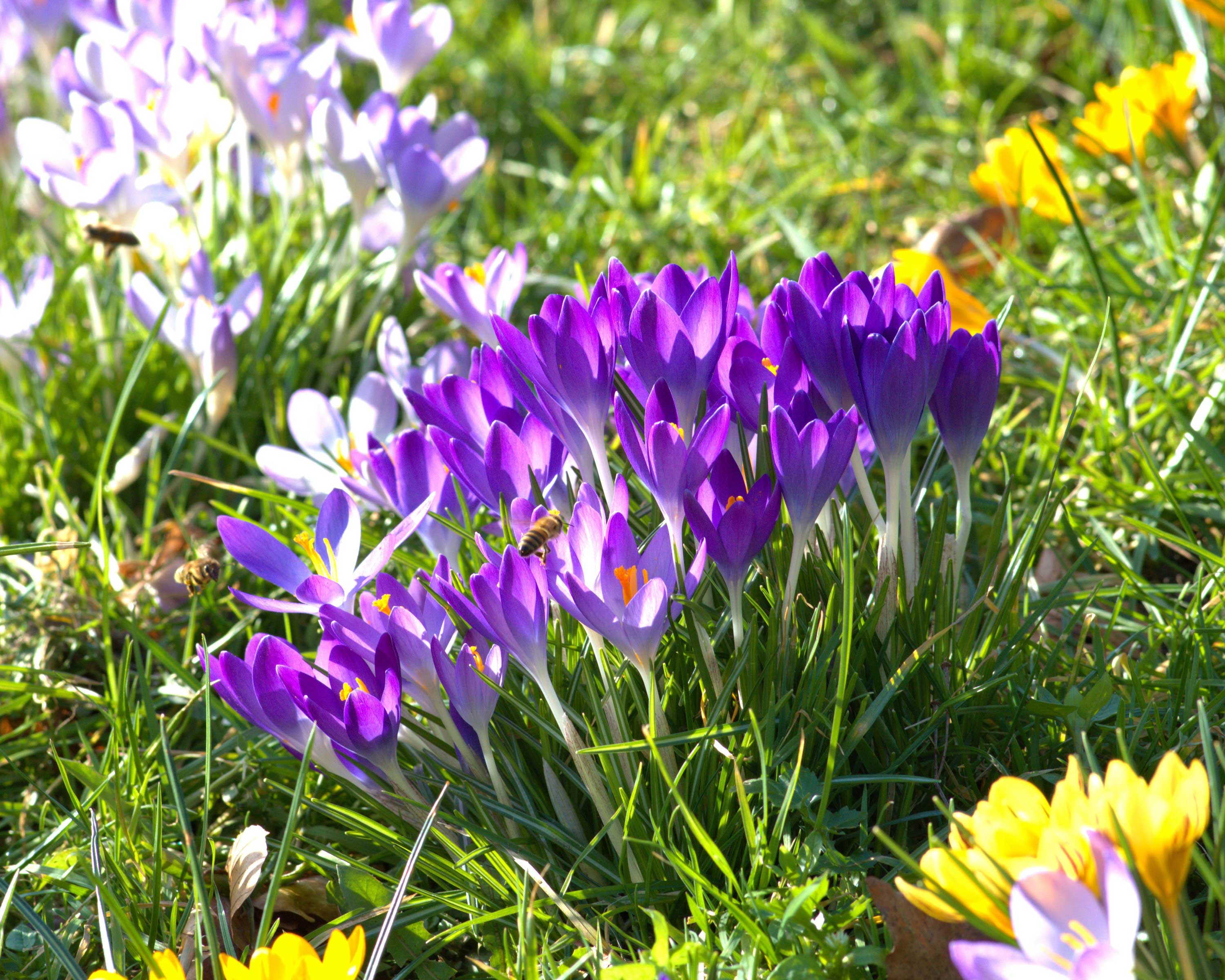
For spring bulbs to plant you can't go wrong with crocuses. These are one of the first bulbs to brighten up lawns and are excellent for naturalizing in grass.
Design expertise in your inbox – from inspiring decorating ideas and beautiful celebrity homes to practical gardening advice and shopping round-ups.
'Crocus like full sun, suiting rockeries, raised beds and turf where they can persist for many years, especially the large Dutch crocus. They are also charming for pots on sunny patios, too,' says Guy Barter.
Plant them in well-draining soil and let the foliage die back completely after flowering.
Crocuses will multiply once established, so to propagate them, dig up large clumps in fall and split them into smaller ones.
2. Snowdrops – galanthus

With their dainty flowers that carpet gardens from late winter through to spring, snowdrops are available in myriad varieties.
Once you know how to plant snowdrops you can learn to recognize and enjoy their many different sizes, shapes, markings and colorings.
'Snowdrops grow well under deciduous trees and shrubs and can persist and spread,' explains Guy Barter.
3. Alliums
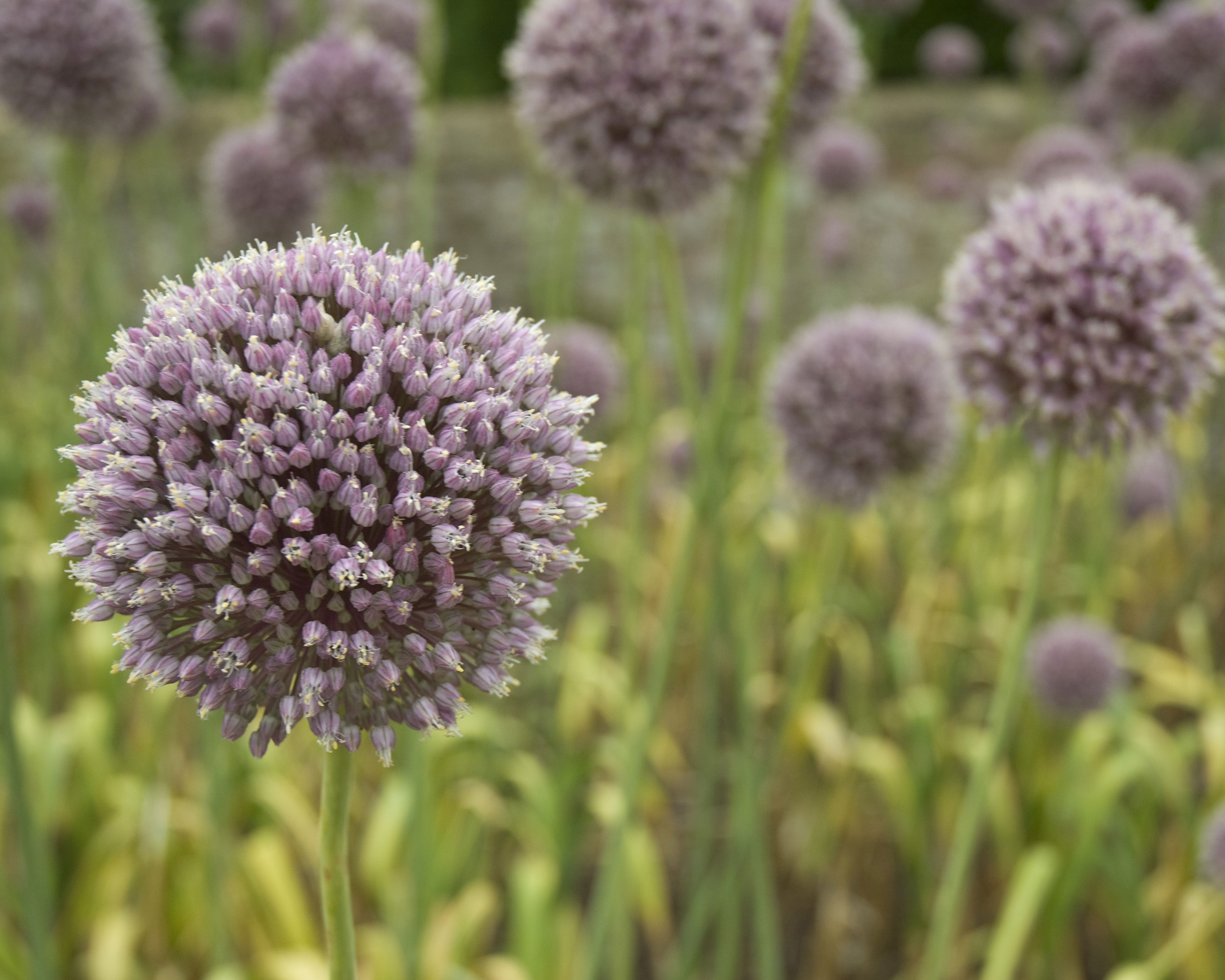
Alliums make an amazing spring bulb for late spring into early summer displays, and come in shades from cerise and purple through to white.
'They are reliably perennial and will bulk up well in most herbaceous borders,' explains Jess Evans.
A classic is Allium hollandicum ‘Purple Sensation’, which will flower around May and grow to about 40 inches (100cm) tall. 'They go well in a mixed herbaceous border or are often grown with roses as part of rose garden ideas,' Jess adds.
'One of my favourite alliums is Allium cristophii. This has huge flower heads and stands at about 23 inches (60cm) tall. It is an almost metallic lilac color and the flower heads can be dried for winter decorations if they are cut and dried after the flowers have lost their color but before they start to drop,' she explains.
She advises that due to the size of the flower heads they should be grown with plants that are low growing to get the best out of the flower head size.
'Some of the taller flowering alliums tend to have long blue-green leaves that can look untidy, certainly as they begin to die down. To prevent this ruining a beautiful display in your garden, plant them further back into a border so that their leaves can be hidden by the other plants,' Jess says.
4. Daffodils – narcissus

A spring backyard would not be the same without the cheery nodding flowers heads of daffodils.
In the process of learning how to grow daffodils you'll become aware that they are among the easiest spring bulbs to grow, and also the huge variety there is to choose from – more than 25,000, if you're asking. They range from dwarf varieties lining pathways or brightening patios in containers, to giant daffodils planted en masse in beds and borders for real impact.
'Daffodils bring the brightest and longest color to the spring garden. Fortunately they are also inexpensive and tolerate a wide range of conditions, although no bulb likes water-logged soil,' says Guy Barter.
Wonderfully obliging, daffodils are happy to grow just about anywhere.
'Extend the season with Narcissus cyclamineus, such ‘February Gold’ with later flowers from old pheasants' eye daffodils, Guy adds.
5. Tulips – tulipa
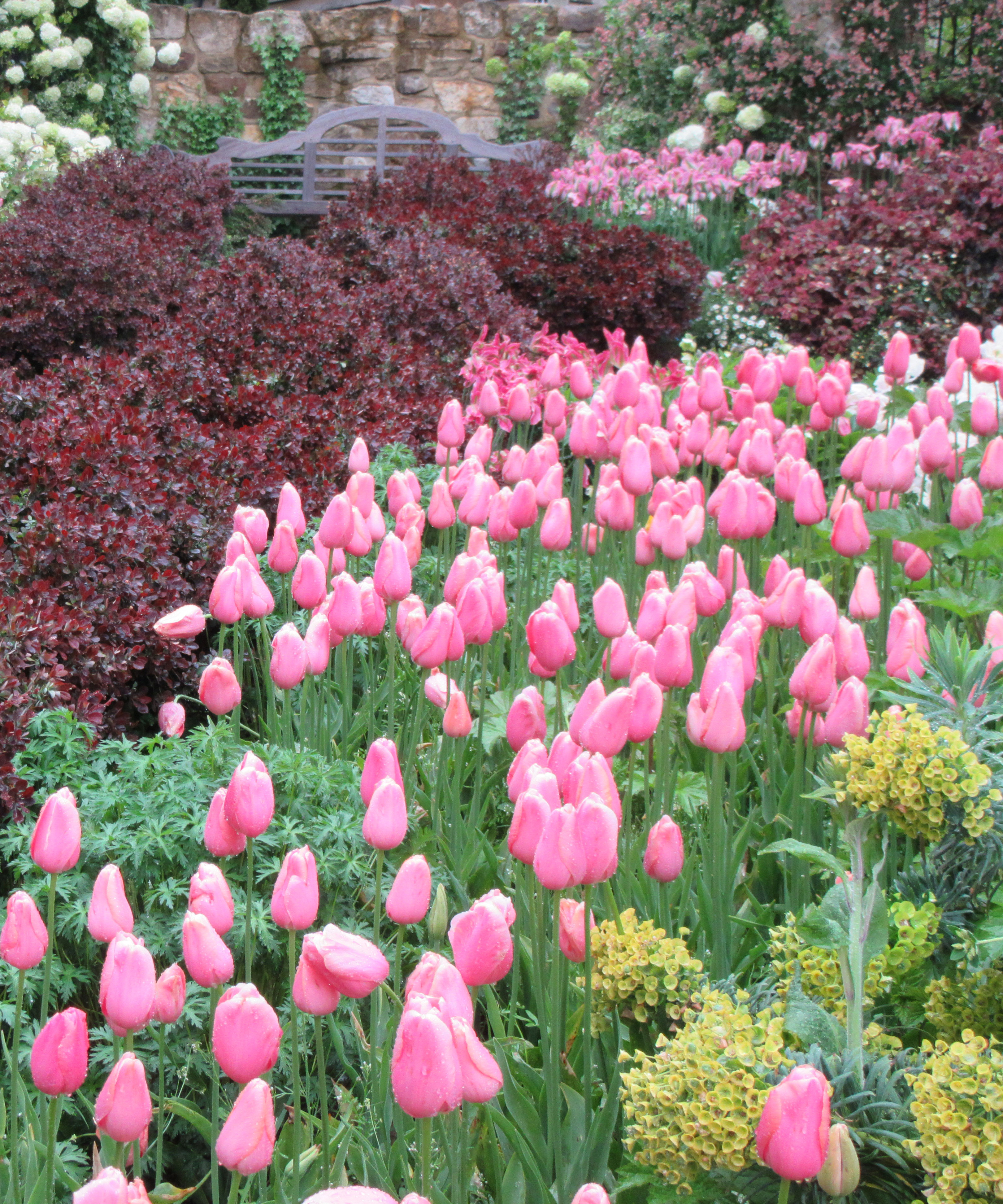
One of the most popular spring bulbs, it is worth every gardener learning how to plant tulip bulbs.
'It's wonderful to see tulips create a spectacular show in spring after all the planning and planting and hard work,' says Greg Ovenden.
At Pashley Manor Garden they plant later flowering bulbs for the Tulip Festival, but there are varieties that will flower from early through to late spring. Check the flowering period when buying them and make sure you get the longest flowering period possible.
'We always look at heights as we are planting to create the effects we want in the displays and we would always advise using top quality bulbs,' says Greg.
Among some of his favorites that he has included in displays over the years are:
- T. 'Queen of Night' – 'because it is such a lovely deep, velvety purple, almost black, and combines so well with other tulips – it goes well in with hot colored herbaceous flowers in reds and oranges, too'
- Tulipa 'Menton' – a classic shaped tulip that starts a pink and gradually blushes with salmon orange as it is in flower
- T. Firey Club – a deep red, slightly shorter variety that looks good at the end of long borders
- T. 'Angélique' – a romantic, pink peony-flowered tulip that is reliable and looks gorgeous in pots and in a rose garden
- T. 'White Triumphator' – an elegant, white lily flowered tulip
6. Fritillary – fritillaria
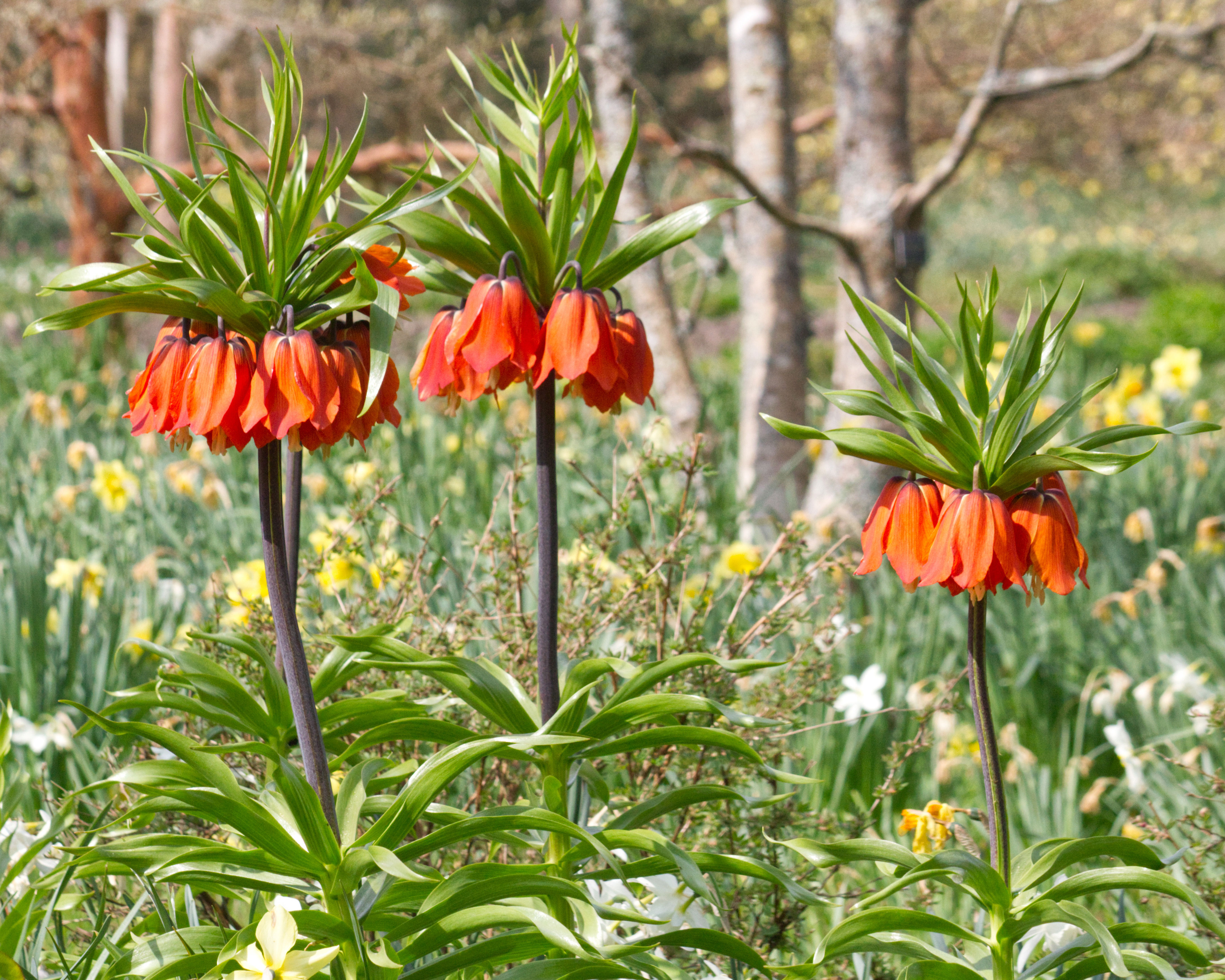
There are many different species of fritillaria that can be grown in the garden as spring bulbs.
'One of the best known ones is the Crown Imperial, Fritillaria imperialis, which stands at around 30 inches (80cm) tall with a ring of yellow, orange or red flowers at the top,' explains Jess Evans.
'This one likes to be in a herbaceous border with good sun. it smells a bit foxy when it is in growth, which can put some people off, but the flower is definitely worth it,' she adds.
Different fritillaries have different soil needs, so check the labels before planting them.
'One I have grown before alongside the Crown Imperial is Fritillaria persica. This one also likes sun and moist, free draining soil, so the two can grow well together. It has almost black bell-shaped flowers on a tall stem of about 80cm so contrasts well with the red or orange of the Crown Imperial ones,' advises Jess.
7. Snake's head fritillary – F. meleagris

Worthy of its own entry due to its beautiful flowers that can pepper lawns is the snake’s head fritillary.
'They are possibly my favourite spring flowering bulb, the patterns on the petals are very intricate and detailed,' explains Jess.
The snake's head fritillary can be challenging to naturalize, but will like a damper soil.
'While it can be naturalized into grassy areas or woodland garden style plantings, it can also be outcompeted so the grass or other plants need to be thinner or knocked back before the fritillaries will thrive,' Jess advises.
8. Dog’s tooth violets – erythroniums
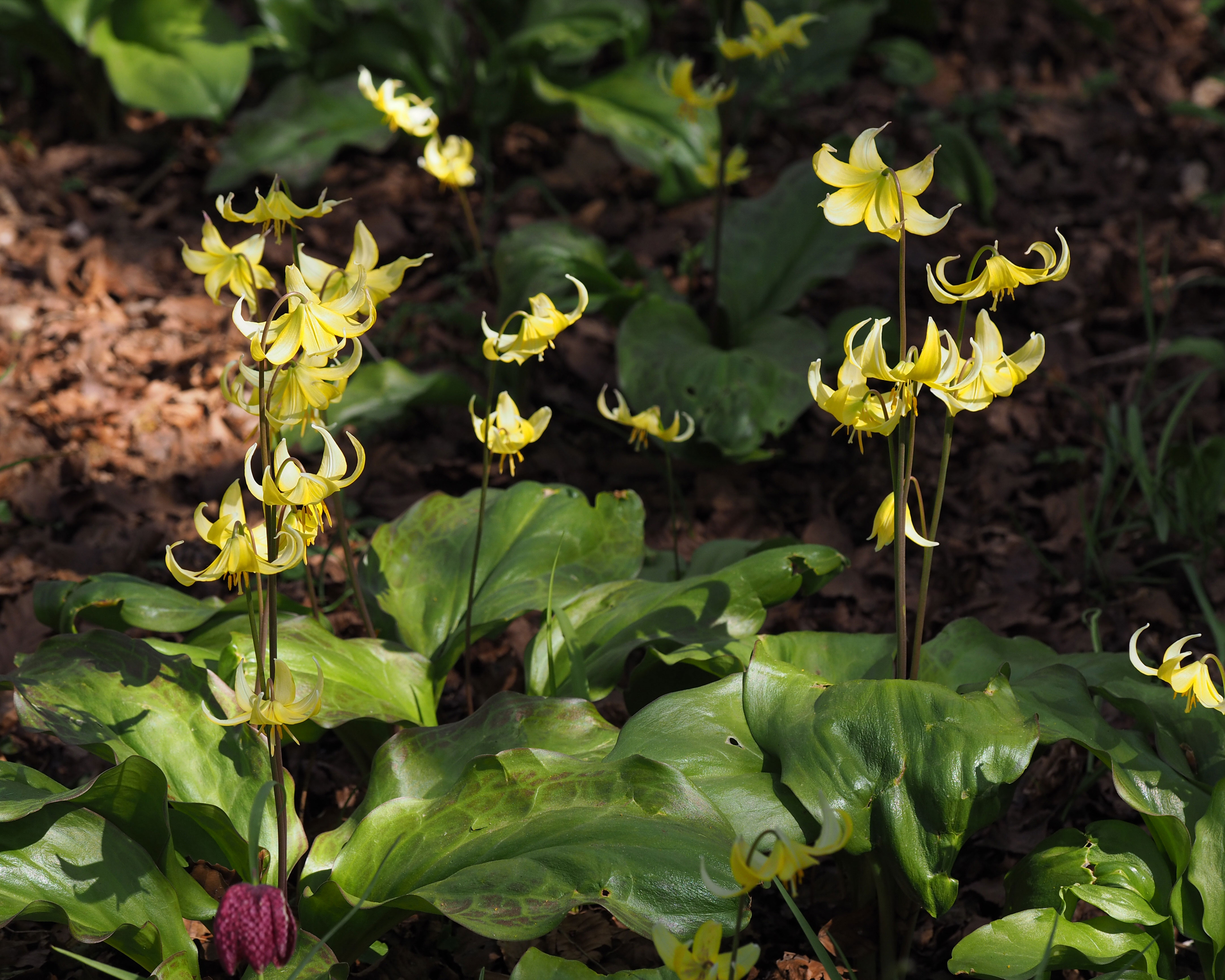
Erythroniums, or dog’s tooth violets, are one of the loveliest spring bulbs to naturalize in your garden.
'They will spread over years to create carpets in your borders. I particularly like Erythronium ‘Pagoda’, which is a little plant, up to around 8 inches (20cm) tall. The leaves are broad and can be marked with purple color markings, while the flowers have 5 reflexed yellow-green petals that stand up just above the leaves in April and hang downwards,' says Jess Evans.
Dog's tooth violets enjoy a slightly damper area in the garden with soil rich in organic humus so are well suited to a woodland garden type border. 'I would avoid planting them with too many other herbaceous plants so that they don’t get outcompeted, although they will handle some shade,' says Jess.
Jess also recommends the pink species Erythronium dens-canis 'which has a slightly more closed flower but is just as pretty.'
9. Lily – lilium
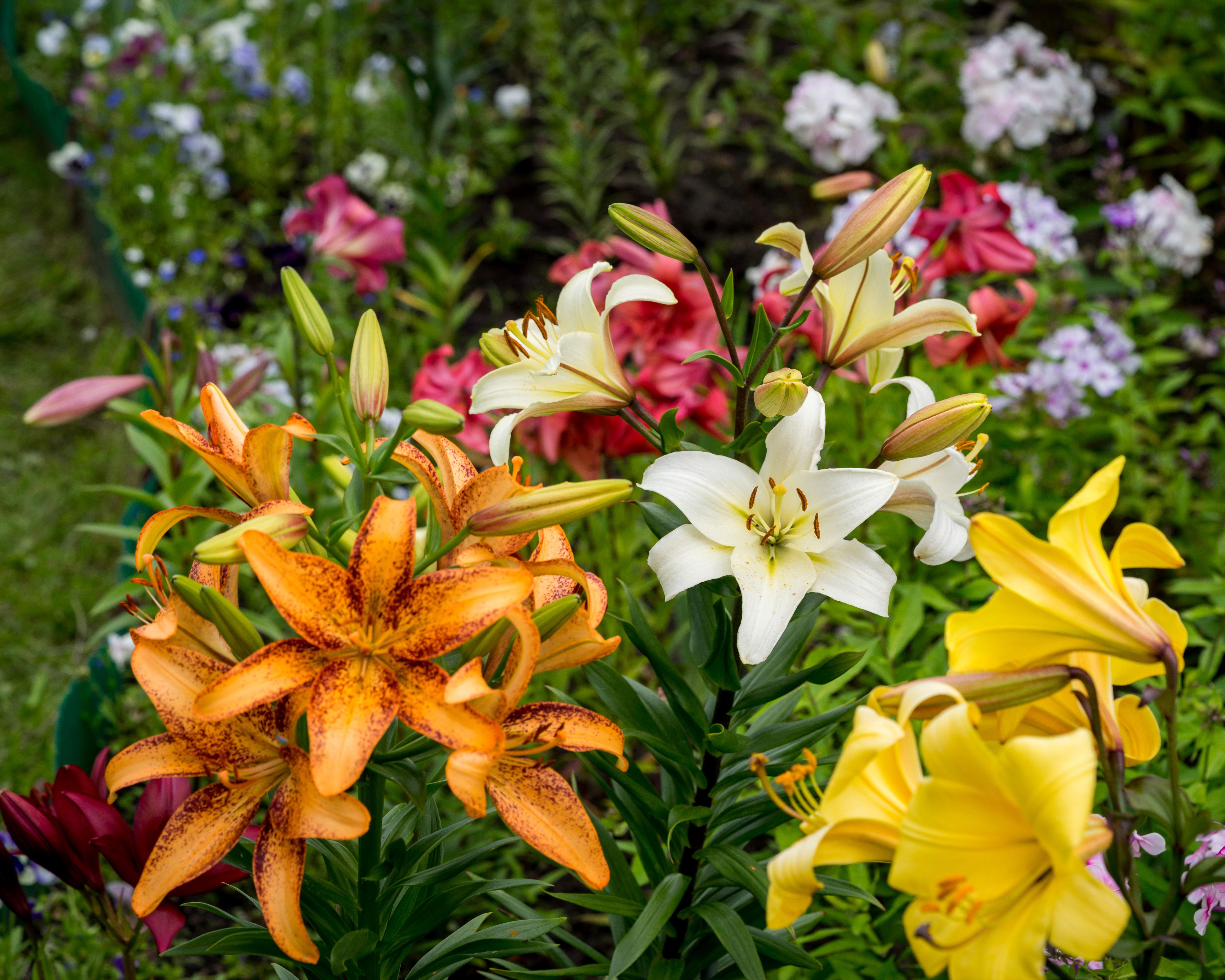
'Lily bulbs are expensive, but arguably the finest bulbs,' explains Guy Barter.
They do very well in pots of rich, peat free potting compost, and should be planted as early as they become available, he advises.
Lilium henryii – Henry's lily – is a good choice.
'Keep pots where they can be inspected regularly to allow lily beetles to be dealt with,' adds Guy.
10. Hyacinths

These popular spring bulbs are prized for their impressive and fragrant spikes of flowers.
'Plant new bulbs every year or two to ensure a good display,' advises gardening writer Leigh Clapp.
Hyacinths are also ideal as potted plants and can be layered with other spring bulbs that flower at different times for 'lasagne planting', such as between tulips and daffodils.
'Wear gloves when planting hyacinths as they can irritate skin,' advises Leigh Clapp.
How to choose the best spring bulbs for your garden
You are spoilt for choice when it comes to flowering spring bulbs to plant. But bear in mind the weather and conditions in the zone where you live to try and carefully orchestrate a flowering bulb bonanza with a changeable display.
If you plan carefully and plant a succession of bulbs you can have a blooming display from late winter right through to summer.
To enjoy a burst of spring flowers, you need to plan ahead because spring bulbs must be planted in fall to early winter.
'Bulbs are shipped when it's time to plant them, and choose varieties of early, mid and late-season bulbs to add color that will last until summer blooms take over,' advise the experts at American Meadows.
When buying bulbs from a nursery or garden center, check the flowering month to try and make sure you get the longest flowering period possible.
'A challenge I really enjoy is trying to come up with a bulb planting scheme that will keep flowering for months but that will change color as the weeks go past,' says Jess Evans, head gardener at the National Trust's Knightshayes garden.
Different bulbs are planted at different depths, but generally three times their height, with the pointed growing tip facing upwards. 'In sandy soils go a little deeper to ensure bulbs find the summer moisture they need to thrive,' advises Guy Barter.
Make sure the beds are all well forked over before planting to make it easier to dig the holes.
'Mulch the beds after planting, but before they start showing new growth – especially if you mulch with manure, as it can burn the new tips of the foliage,' advises Greg Ovenden, head gardener at Pashley Manor Gardens.
If you're a busy or forgetful gardener, you will be pleased to know that a very great number and a fair range of well-grown potted bulbs are offered by nurseries and garden centers from January. 'These are generally inexpensive and can even be cheaper than buying and potting bulbs yourself in fall,' says Guy Barter.
'Some bulbs, such as snowdrops, aconites and anemones, don't like drying out and are also offered in leaf – ‘in-the-green’ – in the spring. Dried bulbs of these species can do well but bulbs in the green are preferable,' he adds.
When should spring bulbs be planted?
Spring bulbs should be planted in fall or early winter, between October to February depending on the variety.
Order and plant your spring bulbs early. ‘Get them in before they start to shoot. If you can't plant bulbs soon after they are delivered, store them in a cool dark place until you are ready to plant them,’ advises Greg Ovenden.
When to plant spring bulbs will obviously differ slightly depending on the zone where you live. If you live in a cooler area, 'plant them by late September for the best results, although flowering of October planted bulbs is usually satisfactory. November planted tulips and hyacinths are also satisfactory and arguably better than earlier planted ones,' advises Guy Barter.
Which spring bulbs come back year after year?
Many spring bulbs, such as daffodil, narcissus, crocus, snowflakes, anemones, fritillaries and others, will naturalize in turf, coming back year after year,' advises Guy Bater.
Most bulbs are, by definition, are perennials, but you need to ensure that they enjoy the right soil, climatic and other conditions to perform well.
There are some bulbs that need lifting and storing, such as tulips, 'while the rest need clumps divided the replanted in the green,' advises gardening writer Leigh Clapp.
'The dense clumps won’t flower as prolifically and may create large empty patches in your bed with they die down,' adds Jess Evans.
It is easy to learn how to divide plants to keep them healthy and fill your garden with color year after year.
Do you soak bulbs before you plant them?
You do not need to soak most bulbs before you plant them, although make sure the bulbs have not completely dried out or they will not take.
The exception to this is small anemone bulbs which should always be soaked before planting to soften them up, as it gives a much better chance of growth.
Some bulbs, such as snake's head fritillaries, need damp soil to thrive, but most will rot if they are left sitting in water.
For large bulbs, such as tulips, try adding a scoop of grit into the bottom of the planting hole, to help drainage.
Rachel is senior content editor, and writes gardening content for homesandgardens.com, Homes & Gardens magazine, and its sister titles Period Living Magazine and Country Homes & Interiors. She has written for lifestyle magazines for many years, with a particular focus on gardening, historic houses and arts and crafts, but started out her journalism career in BBC radio, where she enjoyed reporting on and writing programme scripts for all manner of stories. Rachel then moved into regional lifestyle magazines, where the topics she wrote about, and people she interviewed, were as varied and eclectic as they were on radio. Always harboring a passion for homes and gardens, she jumped at the opportunity to work on The English Home and The English Garden magazines for a number of years, before joining the Period Living team.
